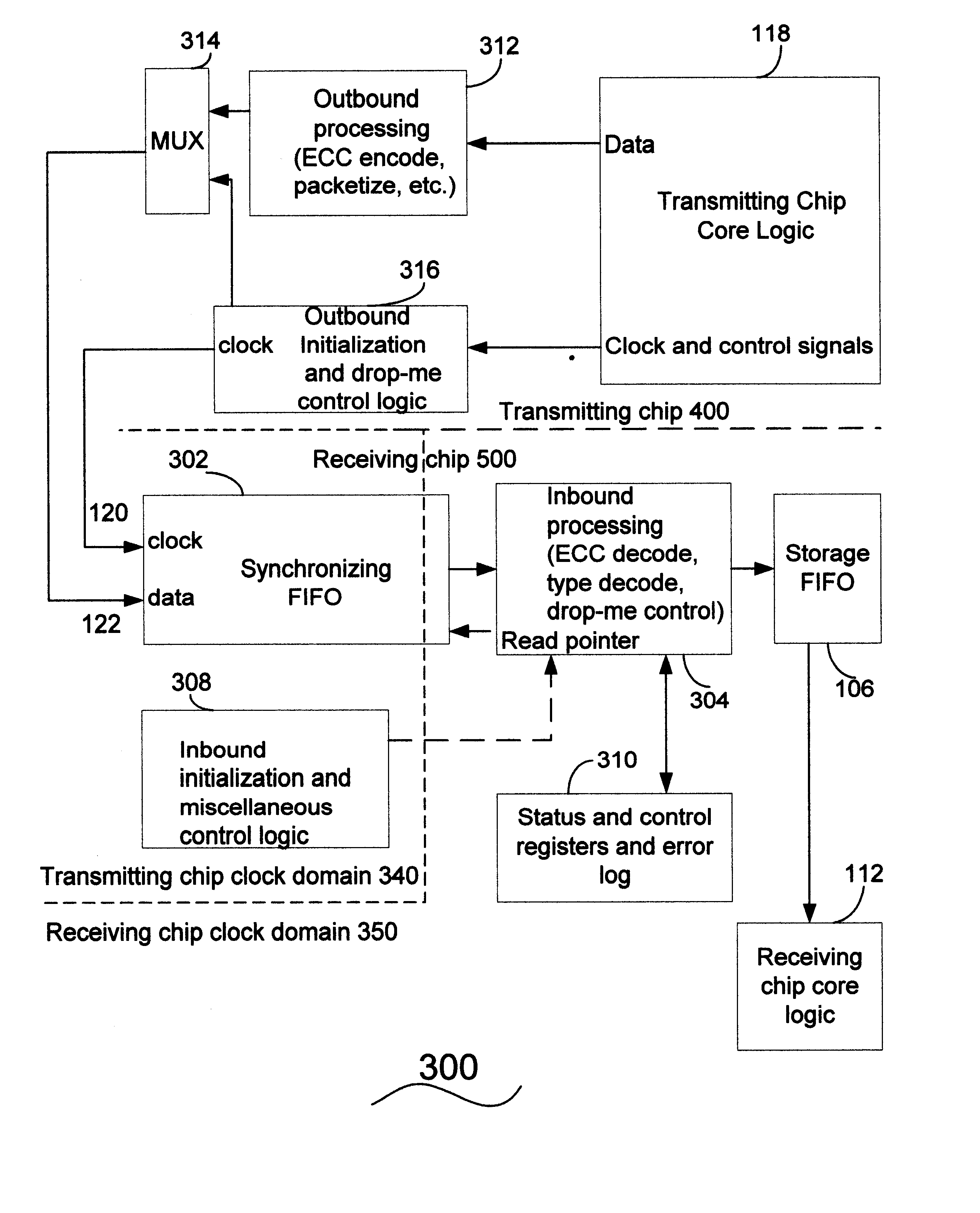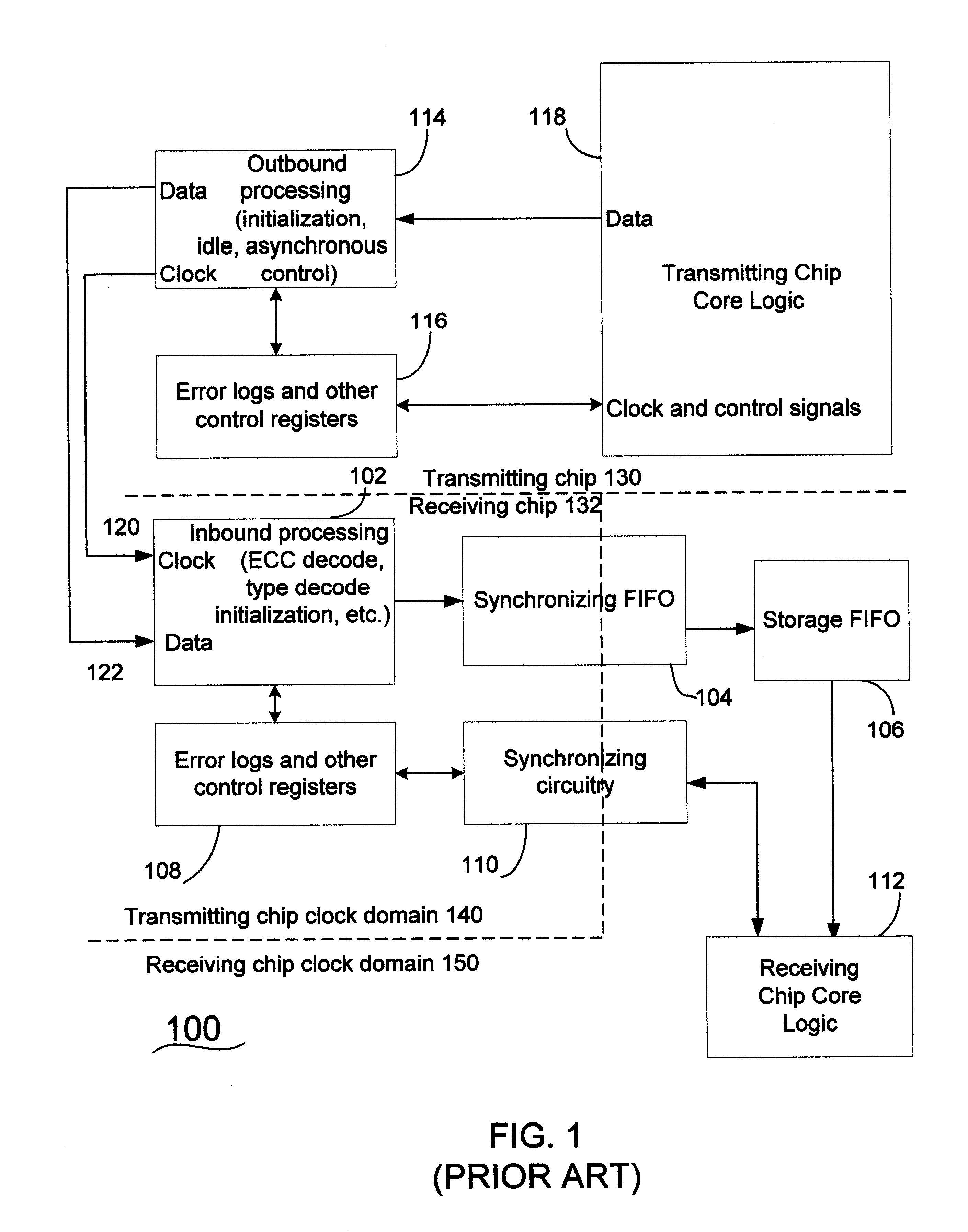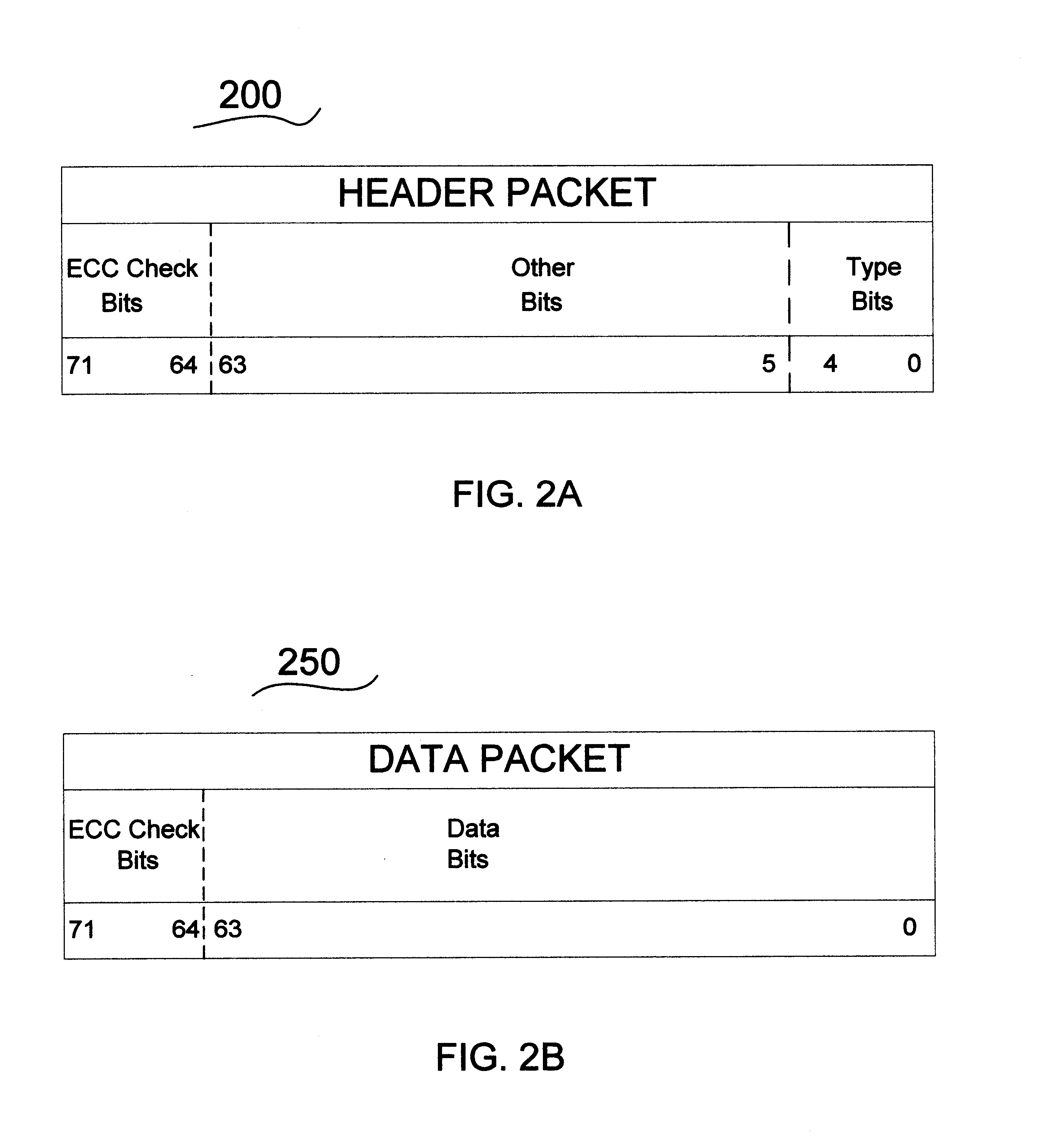Method and apparatus for preventing underflow and overflow across an asynchronous channel
a technology of asynchronous communication and asynchronous channels, applied in the direction of synchronisation signal speed/phase control, data switching networks, instruments, etc., can solve the problems of packet overflow or underflow packet overflow problem, etc., to reduce the complexity of the solution and eliminate the control split
- Summary
- Abstract
- Description
- Claims
- Application Information
AI Technical Summary
Benefits of technology
Problems solved by technology
Method used
Image
Examples
Embodiment Construction
This invention provides an improved method and apparatus for asynchronous communication between a transmitting chip and a receiving chip with different core clock frequencies.
In one preferred embodiment of the invention, a transaction is made up of one header packet by itself, or a header packet followed by or one or more data packets. The packets in a transaction are sent on consecutive clock cycles. A special type of header packet known as an idle packet is sent if there are no transactions available to be sent.
This preferred embodiment of the invention also includes a special synchronizing sequence, which is made up of two new types of header packets. The first of the new header packet types is called a drop-me warning packet. The second of the new header packet types is called a drop-me packet. The synchronizing sequence consists of a series of drop-me warning packets followed by a series of drop-me packets. The transmitting chip periodically sends a synchronizing sequence betwe...
PUM
 Login to View More
Login to View More Abstract
Description
Claims
Application Information
 Login to View More
Login to View More - R&D
- Intellectual Property
- Life Sciences
- Materials
- Tech Scout
- Unparalleled Data Quality
- Higher Quality Content
- 60% Fewer Hallucinations
Browse by: Latest US Patents, China's latest patents, Technical Efficacy Thesaurus, Application Domain, Technology Topic, Popular Technical Reports.
© 2025 PatSnap. All rights reserved.Legal|Privacy policy|Modern Slavery Act Transparency Statement|Sitemap|About US| Contact US: help@patsnap.com



